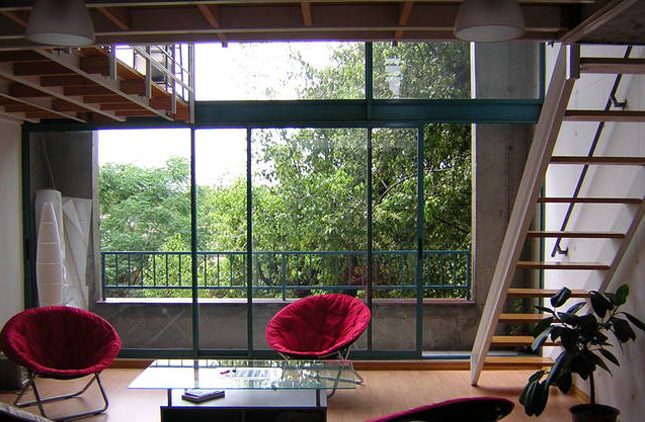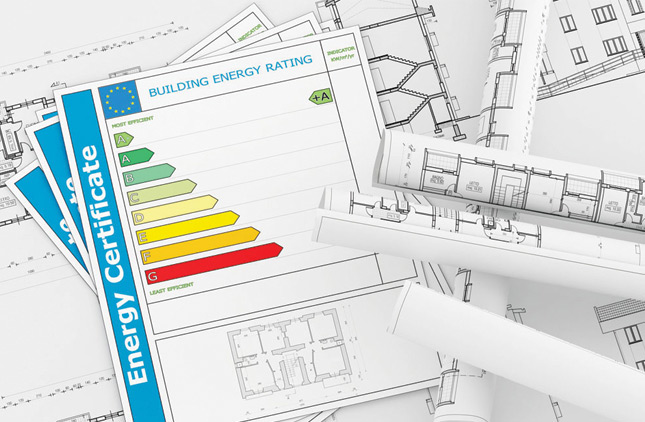Do Loft Conversions require Planning Permission?
Answer One: Planning Permission is not required if the loft conversion only has a roof window.
Answer Two: Planning Permission is not required if the proposed loft conversion has rear facing dormer windows &/or velux windows. HOWEVER this is only the case where Permitted Development Rights (or ‘PD Rights’) are in place.
To be a Permitted Development (not requiring an application for Planning Permission) any additional roof space created by dormers must not exceed the following volume allowances:
- 40 cubic metres for terraced houses
- 50 cubic metres for detached and semi-detached houses
You can check your property’s Permitted Development Rights by contacting your Local Authority Planning Department.
Answer Three: Planning Permission is required if the loft conversion proposal has front facing dormer windows.
Velux cabrio windows are a great alternative to front facing dormer windows and they typically do not require planning approval if Permitted Development Rights are in place on the property.
You can learn more about loft conversions at the PlanningPortal.gov website.
Are you think about a garage or loft conversion, or extending or renovating your home? To arrange a FREE architectural design consultation or for planning advice please contact us, we’d love to hear from you!
How long does Planning Permission take?
We are often asked how long the design and planning permission process can take. We hope the information below gives you an indication of how long it typically takes in the UK. Please note these durations are stated for guidance purposes and do not allow time for any amendments required by local planning authorities.
- Architectural Design: 4-6 weeks
- Architectural design for typical domestic project normally 4-6 weeks depending on size and complexity
- Planning Permission: 10-14 weeks
- Planning approval can take up to 12 weeks however if a proposal requires adjustments, modifications or revisions this may be greatly extended
Please note that if a project relates to a property that has Permitted Development Rights then Planning Permission may not be required.
- Building Regulations: 3-4 weeks
The building control element of the architectural process is typically very flexible, allowing a contractor to modify drawings/specifications (with agreement of the Building Inspector) for compliance on-site.
Building Regulation applications may also be submitted at the time of the planning application, allowing concurrent processing and approval. This can reduce the time is takes to start construction.
In conclusion, the architectural design and approvals process can be quite lengthy or take as little as 14 weeks. Our advice is to start the process as soon as possible, allowing thought and feedback to be integrated into a development – ensuring the design and functionality of your project exceeds your requirements.
Are you think about extending or renovating your home, or constructing a new build? To arrange a FREE architectural design consultation or for planning advice please contact us, we’d love to hear from you!
8 Things You Need To Know Before Building A House Extension
So, you’re thinking about extending your home?
Most people are full of enthusiasm and keen to crack on with a new project. With a little thought, careful planning and patience (and professional advice!) you are much more likely to get your desired end result. Here are 8 key things we think you need to know before you buy a kitchen or start ordering new furniture!!
1) Quality
Why do you want to extend your home?
It might be your forever home and you’re extending to maximise the space for your long term enjoyment. Or you may want to change or upgrade the property into your ultimate dream home. You may already have your home in a great location with no intent on moving again. You may simply want to gain extra space. If this is the case your project is much more about maximising the day-to-day value or experience of your home, and usually a better quality building is required.
If your project is about increasing the value of your property it’s always worth speaking to local estate agents to get a feeling for the potential value your home has. There will be a glass ceiling in your area, and in relation to your plot and setting, so a careful balance needs to be struck between producing a high standard of finish and not spending more than will be recouped on sale.
If you need to create extra space short term until you can afford to move, it’s important to think about how much you will spend on your house extension versus the cost of moving. Remember to factor in removal costs, legal fees, stamp duty and resettlement expenses.
2) Cost
What budget do you have to complete your project?
Setting a realistic, affordable budget is important so your design time isn’t wasted and so the final design is something that can be delivered on time and within budget. As professional architects Bayfield Architecture will always try to bring projects in under budget whilst providing best value solutions and ensuring your expectations are realistic throughout.
3) Time
How long is it going to take?
You need to allow time to design, get your permissions, tender and get the builder scheduled. A typical project might take:
1 ½ months survey and design time prior to planning
2 ½ months in the planning process
1 ½ months to produce working drawings and submit for building control approval
2 to 4 weeks to tender a project
2 weeks to mobilise a contractor to start
If there are additional requirements associated with gaining Planning Permission and Building Control approval this can delay the process. However a professional architect will usually foresee planning and building control issues before they arise and be able to address them when they do.
4) Services
Electricity, gas, water and drainage
Consider the space you want to develop. Is the the area you’re planning to extend going to affect the services to your property? And don’t forget drainage! Sometimes adopted by the local water board, particularly when shared with neighbours. If you intend your extension to be built over an adopted sewer, a ‘build over sewer’ application will be necessary.
5) Planning & Neighbours
If you don’t already speak to your neighbours, now is the time to start! Explain your project over a coffee and get them on board early, typically pre-planning stage.
Don’t be alarmed if your neighbours are not in favour of your proposals. They may want to offload concerns and objections without listening to your facts. Stay calm and let them have their say. Record their thoughts or objections and pass this to your architect; there is often an easy alteration that resolves any perceived issues.
If your neighbours still object, they may ultimately have to raise a Material Planning Objection and submit this to your local authority who will decide whether or not there concerns are material and determine if your proposals are acceptable.
6) Design Style
Use magazines, catalogues, Google Images and Pinterest to assemble ideas about the styles you like, and to identify the ones you want to stay away from.
7) The Project
Think beyond the house extension itself and remember to factor in how the extension will affect the rest of your home. You may need to budget for spending money elsewhere in your home to make improvements to the overall living space. If you can, why not get all the home improvements done together to save time, mess and money?
8) Sustainability
Is your development an opportunity to improve the thermal performance and lower the running costs of your new home?
Your existing house may currently suffer thermally in areas due to condensation, single glazed windows, poor ventilation and the lack of loft insulation. This could be an ideal time to improve the sustainability of your home whilst saving you money in the long term.
Older properties have the most to gain in this respect, there are many easy wins if you know what to look for. We can advise you on the best strategies to make a leap in thermal efficiency in your home.
What do you think of our list? Are you think about extending or renovating your home? To arrange a free architectural design consultation or for planning advice please contact us, we’d love to hear from you!
Housing & Planning Bill Shakeup
Offices, launderettes and industrial units could all become places to live in, according to the government’s latest solution to the housing crisis, heralded as another “planning shakeup” to breathe life in to unused properties.
However in a bid to solve one crisis the new Housing and Planning Bill is potentially paving the way for another. Critics fear it will accelerate the hollowing out of London, speeding up the process of suburbanisation that is fast leaving the capital with no affordable places to work.
The proposed changes in legislation will extend “permitted development” rights, allowing offices and light industrial buildings to be converted in to housing without the need for planning permission or the usual obligations to provide affordable housing.
First introduced as a temporary measure in 2013 to give housebuilding numbers a boost, and originally due to expire in May 2016, the proposed new legislation would see the rule made permanent.
Although the move has been welcomed by the British Property Federation, which says the rules will be “a useful tool in breathing life back into underused commercial space”, the Town and Country Planning Association warns the changes could result in a loss of potential affordable housing whilst allowing more substandard private flats to be carved out of buildings never intended to be used. They also caution local communities will have less say over how their neighbourhoods are developed.
We provide a range of professional, affordable architectural services and free planning and design advice. If you have any questions or an architectural project in mind, please contact us today.







